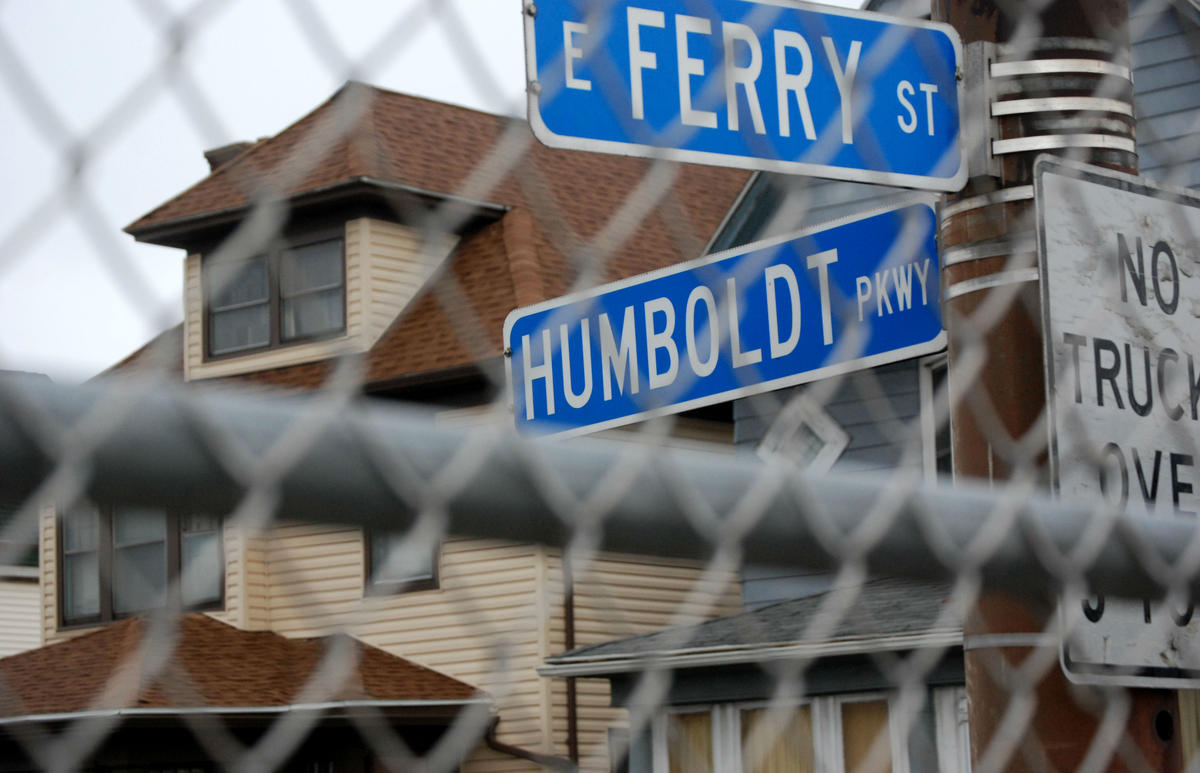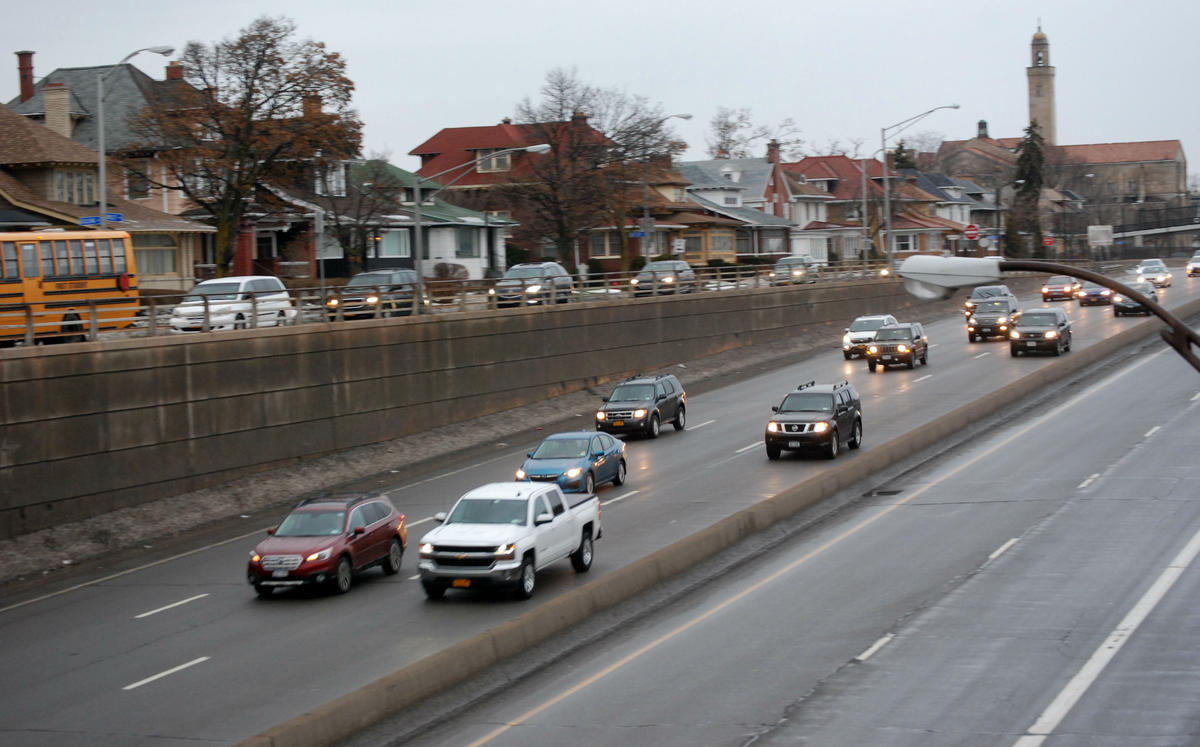Expressway seen as symbol of
racial inequity and health problems
http://news.wbfo.org/post/expressway-seen-symbol-racial-inequity-health-problems
First in a series on environmental justice issues.
The scent of exhaust fumes fill the air on a mid-January afternoon. Cars, trucks and buses zip back and forth from downtown Buffalo on the Kensington Expressway, also known as the Martin Luther King Jr. Expressway.
This section of Route 33 was built in the early ’60s, wiping out a tree-lined parkway designed by Frederick Law Olmsted. Today, the sunken, six-lane expressway cuts straight through an African-American community.
“It was like they were building the Erie Canal that’s what it reminded you of this big elongated ditch,” said 67-year-old Al Thompson, who lives nearby.
He remembers playing football with friends on the Humboldt Parkway’s wide median strip. He also remembers when the parkway was destroyed.

Thompson describes the expressway as a road built so that whites working downtown could quickly get to and from their suburban homes.
“You would look down on to the expressway and you can see into the cars, from the bridges going across,” he said. “It’s all white folks. During the rush hours leaving town.”
Thompson and others see the expressway as a symbol of redlining. That federal policy guided home loans for years after World War II. Experts say it led to racially segregated city neighborhoods and mostly white suburbs.
“Now, it wasn’t until later when I got to be a bit more academically astute, that I understood how sinister the aspect of redlining was. And in my mind, that 33 is the Redline Express,” Thompson said.
Henry Taylor Jr., founding director for The University at Buffalo’s Center for Urban Studies, said the expressway changed city neighborhoods.
“They planned the design and construction of the 33, really before the African American population got there. So they had not yet started construction until the 1960s,” he said. “So whites knew that the highway was coming through and they started to sell their houses to blacks.”
Highways were put in areas where there were fewer single-family houses, and more industry, he said. Lower income workers, blacks and Latinos typically lived in these areas.
“So they’re living on the lands that are most likely to be polluted. And they’re living on lands that are historically situated near your transportation linkages,” Taylor said.
Julian Marshall is a University of Washington professor and co-author of a report on one of those pollutants: nitrogen dioxide. It’s emitted from vehicles, and can contribute to asthma.

